The Chatterbait, aka Bladed Swim Jig, aka Vibrating Jig, is a deadly and extremely popular bass fishing lure. After a string of professional tournament wins by Bryan Thrift and Brett Hite in the late 2000s, the bass fishing world took notice, big time.
The original Chatterbait was so hot that when it first came out they would literally disappear off the shelves as soon as they went up. Fast forward to today and the hype around bladed jigs has cooled off, yet they remain fish catching machines. Bladed swim jigs have improved in design over the years, and this guide covers how to fish a chatterbait effectively once again.
When to Fish a Chatterbait
Bladed swim jigs are most effective when bass are active and shallow. There are exceptions to every rule and clever bass anglers can find other uses for bladed swim jigs throughout the year. Bass move in predictable patterns during the different stages of spring to summer and summer to fall. Here’s what to look for in each season.
Pre-Spawn – As the water begins to warm up, the bass will start to move towards the coves and spawning flats. The fish will start to feed up to get ready for the spawning rituals. Chatterbaits are very good lures to target the big females getting ready to move up to bed. A chatterbait is a very good alternative to lipless crankbaits. When everyone else has been slinging Rat-L-Traps, show the fish something different.
Spawn – A bladed swim jig is not a good bed fishing bait, but it makes a great search bait. Sight fishing isn’t feasible when there is a lot of grass cover, or when the water is stained. If the fish are on beds in these situations, you can catch them by searching with the bladed swim jig.
Post Spawn – After the spawn the big female bass will move out from the spawning flats towards their summer hangouts. They won’t move far at first, usually to the first drop off or the first cover they find nearby. Many times there is shallow cover and greening grass. Chatterbaits are fantastic for intercepting these fish. You can load the boat when you find the right stretch.
Summer – As the grass fills in and the mats form, bladed jigs can’t be used effectively. However, by pulling back to the inside and outside weed edges, the chatterbait can be used once again. Slow rolling the bladed jig like a spinnerbait is the ticket. Heavier bladed jigs (3/4 to 1 oz) can even be fished over shell beds on ledges.
Fall – In the fall, shad move towards the shallow once again, and the bass will follow. Grass begins to die off and fade leaving holes and submerged weed tops. In these situations, a baitfish colored chatterbait can be dynamite. Ripping the jig over the tops of the remaining weeds can trigger bites.
Here is the 2014 Bassmaster Elite event on Lake Seminole, where Brett Hite puts on an absolute clinic by fishing a green pumpkin chatterbait with a Swim Senko trailer. Pay close attention to how he works the bait and rod on the grass flat.
Where to Fish a Chatterbait
Bladed swim jigs are versatile, but shouldn’t be fished where there are a lot of rocks and brush. The jigs tend to snag much easier in that type of cover. These are the best places to fish a chatterbait during the prime times of the year.
- Shallow & Mid-Depth Grass – Submerged grass from 1 to 6 feet deep is the bread and butter use for chatterbaits. Even if the grass is thick, the bait can be fished in the tops of the weeds. Scattered weed growth is excellent, as bass use the hoes and lanes as ambush points.
- Wood Targets – Laydowns and stumps can be fished well with bladed swim jigs. The key is to be able to feel the lure and work it through and around the wood without snagging. It’s similar to fishing a squarebill crankbait.
- Docks – Chatterbaits are underrated dock baits. Tie on a bladed jig whenever there is any kind of grass growth around docks, especially in the spring and early summer. Dock posts hold bait, and the bass will be nearby feeding before and after spawning. Skip a bladed jig under docks using a swimbait style trailer. The flat sides of a Zako or Magic Shad help the bait skip on top of the water.
- Shell Beds – Mussel beds are notorious for attracting schools of bass in the summer. Crawl a chatterbait along the bottom, grinding it among the shell bed. Try it whenever the fish won’t hit a crankbait or big worm. Sometimes the biggest fish in the school will nail a chatterbait.
How to Fish a Chatterbait – 4 Techniques
- Slow Roll – Slow rolling keeps your bait down where the fish can react to it. Turn the reel handles as slow as you can while still feeling the blade thump. If you find the jig running to the top you need to either slow down even more or use a heavier jig.
- Burning – Burning it in is the opposite of slow rolling. Reel in the chatterbait quickly until the blade is waking just under the surface. The wake looks like a fleeing baitfish and can trigger some really violent strikes.
- Ripping – Sometimes bass are in a neutral mood, just content to watch your bait swim by. Ripping the bait can make those fish react to sudden movements. Reel the chatterbait in slow enough to catch the tops of the grass, then with a quick snap of the wrist, rip the bait free of the grass. This is the same way lipless crankbaits get the fish to bite.
- Shaking – Shake the chatterbait by working the tip of the rod up and down on the retrieve. The bait will jump and dart around erratically, causing the skirt to pulse and flare. Shake a chatterbait through submerged or tall grass with clear lanes to work the bait through.
How to Rig a Chatterbait
Rigging a chatterbait is simple. You have the jig itself, which usually comes pre-rigged with a skirt. Then add a soft plastic trailer to add bulk and keep the bait moving slowly with tons of action. I tie all vibrating jigs on with the Palomar knot, no matter if I’m using fluorocarbon or braid. Beyond the bait rigging basics, there are rod, reel, line, and color choices to make which we detail below.
1. Rod, Reel, and Line Considerations
The best rod for chatterbait fishing is a 6’-6” or 7’-0” Medium action rod with a fast tip. You can get away with a shorter rod with chatterbaits 3/8oz and lighter. The 7-foot rod is the better choice for most situations, which is needed for the backbone to pull big fish out of thick vegetation. It has enough tip to rip and pop the jig from the grass, but soft enough for the fish to grab and hold onto the bait.
Pair your rod with a 6.3:1 or higher gear ratio baitcaster for an excellent chatterbait setup. Check out our top choices for baitcasting reels.
Don’t make line selection too complicated. 30lb braided line is perfect for slightly stained to dirty water situations. 15-17lb fluorocarbon line works great if the water is clear or the fish are short striking your lure.
2. Weights & Colors
I use 1/2oz chatterbaits the majority of the time (these are my favorite bladed swim jigs). It’s the perfect weight for keeping the bait down while still being able to move quickly. 1/2oz works from 1 to 6-8 feet deep no problem.
Downsize to 3/8 or 1/4oz if the bigger baits are getting bogged down in the grass. Upsize to a ¾ or 1oz jig when trying to get to 10 feet or deeper. Anything lighter will tend to ride too high in the water column.
Some colors work better in certain seasons, and always try to “match the hatch” when possible. Use a complimenting trailer color to create a realistic presentation. Here are the best chatterbait colors that work all around the country.
- Black/Blue – Black and blue is a staple of bass fishing. A black and blue skirt paired with a darker colored trailer works best in low light and low water clarity. I have had some great days fishing this color through some really scummy water. When I see slimy clumps of springtime weeds, this is the first color I reach for.
- Green Pumpkin – This is the best year-round color for all scenarios. Green Pumpkin just tends to look natural in any kind of water. It works well with a dark green trailer or sometimes with a lighter color for contrast.
- Bluegill – When the bluegill are spawning, there is almost always largemouth nearby waiting to ambush. It only makes sense that a chatterbait with Bluegill patterned skirt and trailer can crush them. Run the chatterbait all around any area you know has a concentration of bluegill beds.
- Red Crawfish – Red lipless crankbaits have a strong reputation in the cool waters of early spring. Fish a red chatterbait in the same places you would fish that lipless. Slow rolling around grass and ripping it free works great with the red color scheme.
- Pearl/Sexy Shad – I love to use a pearl swimbait with a sexy shad chatterbait during the shad spawn in early summer. Anywhere I see shad flickering on the surface, I will throw the chatterbait. Sometimes you will run into some really nice schooling action.

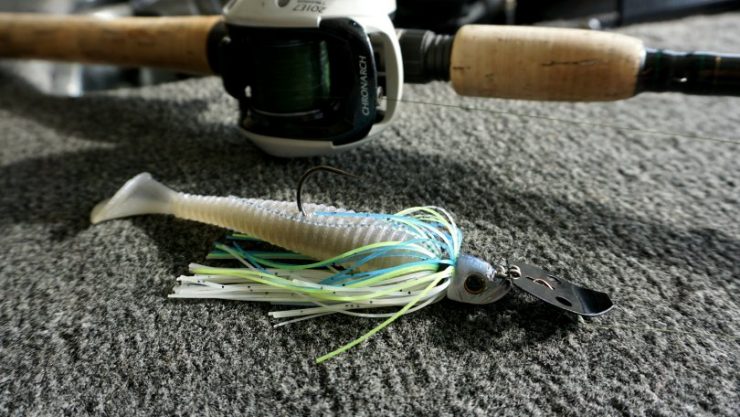
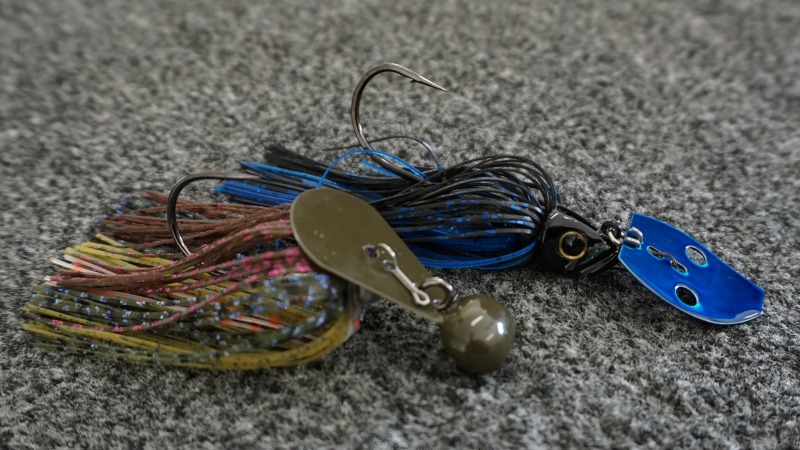
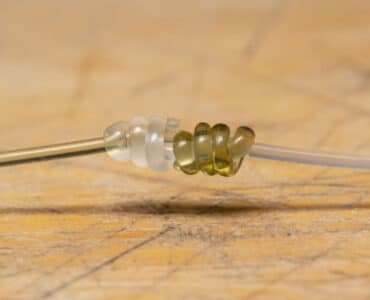
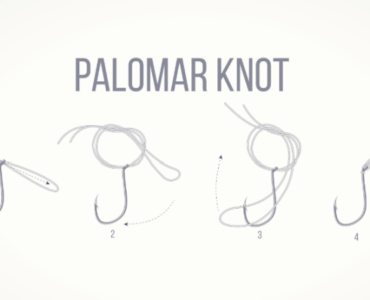
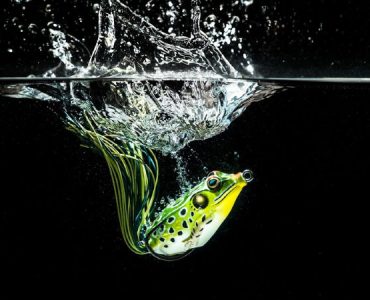
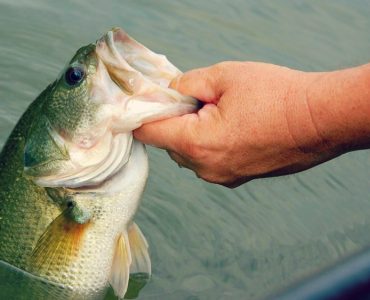








What if some lakes in North America don’t have a shad spawn or let alone Shad fish at all when it comes to using Pearl/Sexy Shad, How would this color of trailer and chatterbait work in my favor?
Oh and you forgot to talk about White Chartreuse chatterbait color and what color of trailer to use, which I was curious to learn more about and how to use it to my advantage.
Most lakes have some type of baitfish, but if not then that color might not be suitable for you. Do your best to match the forage in your lake.
Chartreuse is a great color to add to your trailers, it can make a big difference in dingy water. Try coloring the tails on your trailer in chartreuse or orange and see what happens.